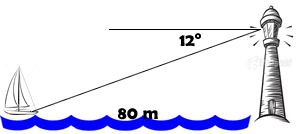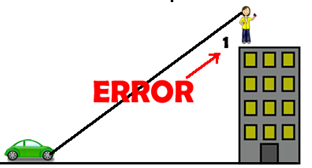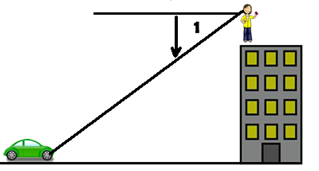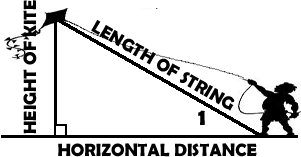SKILLS
(1) The student will be able interpret the word descriptions into lengths and angles of a right triangle so that they can diagram the relationship.
(2) The student will be able to solve trigonometry and Pythagorean Theorem problems based on written descriptions.
|
|
THE BIG IDEA
The power of trigonometry is in its application - I often say to the students "Out of all the things that you will learn in geometry, trigonometry is probably the most used concepts in the real world." In the objective we look at some of the places we can apply trigonometry to solve problems.
|
TRAPS & PITFALLS
The angle of depression is always a great setback for many students. The angle of elevation is so easy and then almost in a careless nature they often wrongly assign the angle of depression. If they do not create the horizontal line (the horizon line) they place the angle in the wrong location.
The other issue in this objective is the process of translating the descriptions into mathematical relationships. I spend a lot of time drawing diagrams and linking words to pictures.
|
|
PAST CONNECTIONS
The past connection is to G.SRT.6 where we discovered that trigonometry was tightly connected to similarity and that it allows us to link angles sizes to side proportions. In this objective we use this knowledge to solve 'real world' problems.
FUTURE CONNECTIONS
Trigonometry becomes a powerful tool to solve many problems past this point of mathematics.
|











